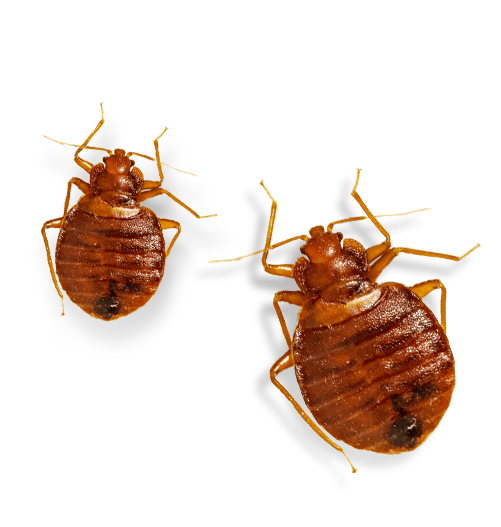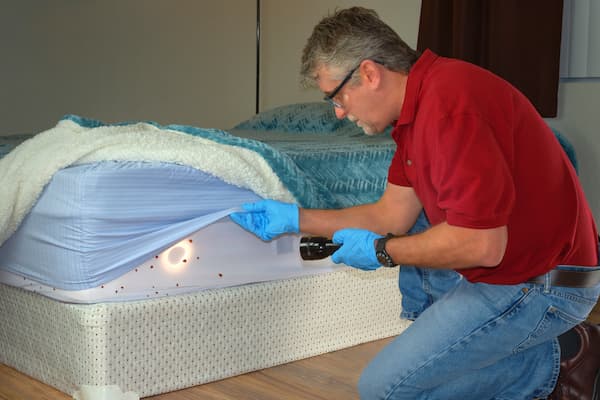Discovering the Scientific Research Behind Bed Bug Warmth Treatments as a Sustainable Parasite Management Approach
One such method that has actually gained traction in recent years is the use of warm treatments to deal with bed insect infestations. The intricacies of exactly how warmth properly eliminates bed insects and the wider ramifications for lasting bug monitoring techniques make this a subject worth discovering further.
Bed Bug Heat Treatment Process

Thermal Death Factor for Bed Bugs
Subjecting bed bugs to elevated temperatures beyond their thermal tolerance range is essential for accomplishing efficient elimination in warm treatment processes. By reaching and maintaining temperatures over the thermal fatality factor for bed pests, bug administration specialists can make certain thorough elimination of bed bug populaces, consisting of hard-to-reach locations where chemical treatments may be less reliable. Recognizing the thermal fatality point for bed bugs is vital for executing successful heat therapy methods and accomplishing sustainable pest monitoring end results.
Advantages of Heat Treatments
Having actually developed the vital thermal fatality point for bed insects, it is essential to now discover the significant advantages that warmth treatments provide in properly eradicating these durable parasites. One of the primary advantages is that warm can pass through deep into fractures and gaps where bed bugs hide, making sure that also the most hard-to-reach areas are heated to deadly temperature levels.
In addition, warmth treatments are eco pleasant and non-toxic, making them a sustainable insect administration technique. Unlike chemical pesticides, warmth treatments do not leave dangerous deposits that can present threats to human wellness or the environment. This facet is particularly crucial in delicate environments such as health centers, schools, and suburbs where chemical usage may not be preferable.
In addition, warmth therapies have a high success price in removing bed bug invasions in a single therapy, lowering the need for multiple visits and decreasing disturbance to occupants. This efficiency not only saves time and cash yet likewise offers comfort to those managing bed insect issues.
Efficiency of Warm Treatment

Study research studies have actually continually shown the performance of warm therapies in accomplishing a high rate of bed pest death. Correctly performed warm therapies can reach all the holes and cracks where bed insects may be harboring, ensuring a thorough method to elimination. Furthermore, warmth treatments have look at this site the included discover this benefit of killing bed pest eggs, which are frequently immune to traditional chemical therapies. Generally, the performance of heat therapies in getting rid of bed bug invasions makes them a reliable and sustainable insect administration approach.
Lasting Parasite Monitoring Benefits
Carrying out lasting bug administration methods provides long-term advantages for both the setting and public wellness. By using methods such as heat treatments for pest control, we can decrease the reliance on harmful chemical pesticides that can have damaging impacts on environments and human health and wellness - DC exterminator. Sustainable parasite administration strategies aid in protecting biodiversity by targeting specific parasites without hurting non-target organisms, therefore preserving Learn More a well balanced environment
Additionally, lasting insect monitoring methods add to the general health and wellness of the public. By lessening exposure to hazardous chemicals used in standard parasite control techniques, warmth therapies provide a more secure alternative for bug monitoring in domestic, business, and public spaces. This reduction in chemical use also assists in protecting against pesticide deposits from infecting air, soil, and water, safeguarding environmental top quality.
Conclusion
To conclude, bed pest warmth treatments have been revealed to be a sustainable and efficient bug monitoring strategy. The thermal death point for bed insects makes them at risk to heat treatments, which have various advantages over standard chemical therapies. The performance of heat treatments in eliminating bed insect invasions while decreasing ecological influence highlights the potential of this method as a sustainable service for insect control.
The bed insect warm treatment process includes raising the temperature within plagued areas to a level that efficiently gets rid of bed insects and their eggs. By reaching and preserving temperatures above the thermal death point for bed bugs, pest management specialists can guarantee extensive elimination of bed bug populaces, consisting of hard-to-reach locations where chemical treatments may be less effective. One of the key benefits is that warm can permeate deep into cracks and crevices where bed insects hide, guaranteeing that even the most hard-to-reach locations are warmed to deadly temperatures. Unlike chemical treatments that might leave behind resistant populations, warmth therapies provide a ecologically friendly and safe option that can penetrate deep right into furnishings, walls, and various other hard-to-reach locations where bed insects hide.
The thermal fatality point for bed pests makes them at risk to warm treatments, which have countless benefits over conventional chemical therapies.